Imagine this as a typical day in an elementary, middle or high school: Elementary students working in collaborative groups to design rollercoasters with simple, everyday materials to learn about force and motion. High school and middle school teachers facilitating student-led discussions and asking questions to stimulate creative problem solving for a community project to solve an erosion issue in the coastal region. University professors are providing students with research opportunities that align to their chosen career and college pathway- bio medical science. This type of learning is the norm in classrooms that have fully integrated the STEM principles of learning to the point that STEM is part of the culture. The nine AdvancED accredited and newly STEM certified schools have made significant advances in STEM education and consequently, a higher degree of collaborative, inquiry-based and student-centered teaching and learning has infected each school’s culture and purpose and direction.
The Emergence of STEM Education
With federal and other grant monies available to public schools in the United States, establishing a STEM program within a school has become part of the United States education landscape or regarded by some educators as the movement that could lead to policy, budget, and curriculum reforms. Although conceptually, STEM was introduced in the early 1990’s by the National Science Foundation (Vasquez, 2014), the movement towards this approach to teaching and learning took on a “life of its own.” For example, curricular programs were developed for schools to purchase and implement, private and government funding for STEM programs were financially attractive, and attaching or inserting STEM to a school’s name became the simple, convenient way to be “STEM.”
Certainly, these methods should be regarded as a starting point to change a school’s instructional approach or receive much needed funding to implement a new program. But for schools to have authentic, effective, and sustainable results that meet the needs of all learners, STEM has to be embraced as an integrated, inquiry-based approach that incorporates as a minimum, the four disciplines: science, technology, engineering and mathematics. In doing so by intentional collaborative planning, the results change teaching practices, the curriculum and student learning outcomes. Possibly John Dewey had it right all along. A quote that summarizes his educational theory aligns with the philosophy of STEM education: “Children soak up knowledge and retain it for use when they are spontaneously induced to look into matters of compelling interest to themselves.They progress fastest in learning, not through being mechanically drilled in prefabricated material but by doing work, experimenting with things, changing them in purposive ways,” (Dewey, 1960). Perhaps a movement away from teaching in silo-like content areas and integrating the disciplines with an emphasis on science, technology, engineering and math will positively affect teaching and learning for all students.
A New Framework for Identifying Effective STEM Learning
Although STEM principles and concepts were introduced approximately 25 years ago, a framework and criteria has not yet surfaced from any specific organization or governmental agency. Organizations, both membership and policy oriented, developed their standards or criteria for purposes of progressing its agenda or content. AdvancED, not affiliated with or a promoter of any specific content or curriculum, was poised to be the conduit for this body of knowledge, practices, and strategies and concurrently, improve STEM literacy and education.
Early in 2014, AdvancED acted on its goal to increase STEM literacy by charging a selected group of educators who fully were immersed in STEM education and AdvancED educators with backgrounds in research and curriculum and instruction to develop the STEM Standard and Indicators.
The committee worked for a period of six months and reviewed and examined STEM standards from states such as Georgia, North Carolina, Arizona, and Maryland as well as STEM standards and research from organizations like Change the Equation, the National Research Council, and the Afterschool Alliance. Their deliberations brought them to an early-on commitment to STEM learning that is personalized, self-directed and student-centered that is demonstrated through presentations to a range of audiences. These audiencies are interdisciplinary, focused on big ideas and in-depth study, enhanced by systematic enrichment opportunities that supports non-traditional student participation.
After months of research, review, and discussions, the committee submitted the final STEM Standard, 11 Indicators, and suggested Evidence to the AdvancED Leadership and Accreditation Commission for their approval, which was granted in December 2014. The final STEM Standard reads: STEM students have the skills, knowledge, and thinking strategies that prepare them to be innovative, creative and systematic problem-solvers in STEM fields of study and work. Each of the 11 Indicators have clear concepts within four performance levels.
The STEM Certification Process: The Pilot
Beginning in August 2014, AdvancED STEM Certification was launched as a pilot and offered to schools that had an accreditation review scheduled for the school year 2014-2015 and implemented STEM principles as part of their comprehensive curricular program or within the school, such as in specific grades. The purpose of the pilot phase of STEM Certification was to test the content validity of the Standard and Indicators and the effectiveness, pliability and reliability of the certification process.
The AdvancED Managing Offices worked with the pilot project leads to promote and inform schools of this opportunity to seek the certification status and subsequently, receive a comprehensive report of findings from an on-site review conducted at each school. Interested schools were provided consultation by the project leads to gain an understanding of the Protocol, STEM Standard and Indicators, and self-assessment process prior to totally committing to participate in the pilot.
In this pilot year, it was essential to ensure the process worked in conjunction with an accreditation review and independent of the school’s scheduled accreditation review to allow institutions different options to attain STEM Certification and earn this recognition.
STEM Certification was developed to mirror and complement the AdvancED Accreditation Process- a well-tested and reliable method of analyzing a school’s level of performance and adherence to a set of practices. During the pilot phase, the criteria to earn STEM Certification were set such that the minimum total average rating for all Indicators had to equal a minimum of 2.80 out of a possible 4.00; no Indicator could be rated lower than a “2” based on the four levels on the performance rubric. Additionally, the school’s Index of Education Quality™ (IEQ™) score had to be within the range for schools that earn accreditation status. To formalize the STEM Reviewers’ analysis of the data and findings from the observations and documentation, each school received a comprehensive report that included the final ratings for each Indicator, statements that described STEM practices that were exemplary and recommendations for areas that could improve to achieve a higher rating for a specific STEM practice.
The nine schools, which sought and subsequently earned STEM Certification from August 2014 to early March 2015, engaged in a deep and collaborative self-analysis of their current STEM practices. Each school determined their performance level for each of the 11 Indicators, substantiated it with a plethora of documentation specific to STEM practices, and submitted the information to STEM Certification Reviewers in a format that emulated a “STEM-like” presentation—meaning an emphasis on student produced evidence in digital formats such as student developed videos, blogs, and digital portfolios. Similar to the accreditation protocol, each school also wrote narratives to describe its STEM education success, challenges and future plans to improve the program. The schools, all familiar with the accreditation process of self-analysis, appeared to delve deeply into the STEM self-assessment process. According to Anthony Alston, administrator from Metro Early College High School, “the self-assessment and subsequent review required total faculty/staff buy-in and involvement, resulting in a significant professional development opportunity, which ultimately helped to refine and refocus staff development efforts.”
In most instances, a minimum of two trained STEM Certification Reviewers visited each school for two days and reviewed the school’s evidence that informed the Indicators’ ratings, conducted classroom observations using the Effective Learning Environment Observation Tool™ (eleot™), interviewed school stakeholders affiliated with STEM and deliberated during the two-day on-site phase of the process.At the close of the second day, the STEM Reviewers provided the school leadership team with the final ratings for each STEM Indicator, the eleot observations, and specific examples of exemplary STEM practices and areas in which improvement could result in stronger STEM educational practices. The school leadership also received the reviewers’ recommendation for STEM Certification to be awarded to the school–an announcement that generally resulted in tremendous excitement.
Several school leaders expressed during post-certification communications how powerful the internal and external reviews were for their STEM improvement efforts.
The first K-5 elementary school’s principal to earn AdvancED STEM Certification stated, “Going through STEM Certification helped our school reflect on the ways in which we provide our students with STEM experiences. In doing so, we were able to refine the practices that were effective and make decisions about whether or not to continue those that were not. In addition, it helped us identify ways in which we could enrich our program to provide the most engaging experiences possible for our students” (Elliott Southard, Mount Lebanon Elementary School).
In a few instances, schools that embarked upon the STEM process needed additional time and improvement before the certification could be awarded as the criteria and practices are comprehensive and arduous. Generally, for these schools, the STEM program was determined to be in its initial stage of implementation with the four STEM disciplines working towards integration and greater student-focused activities. These schools and those in the future that do not meet the criteria established for the certification will have the opportunity to reapply a year after their initial attempt to earn STEM Certification.
Since the STEM Certification pilot is approaching the completion of its first phase, quantitative data are not yet available to present and describe relative to the process’s degree of reliability and effectiveness. What is known is that the highest rating earned for STEM Certification was 3.27 and the lowest was 2.55, with the majority of the schools’ ratings hovering at 3.0. The majority of the schools performed well on the STEM Indicator that focused on “students work independently and collaboratively in an inquiry-based learning environment that encourages finding creative solutions to authentic and complex problems.” Conversely, the lowest scoring rating Indicator resulted in the STEM practice of collecting data to ensure “STEM learning outcomes demonstrate students’ STEM literacy necessary for the next level of STEM learning…” To better understand why these Indicators fall within these categories, the pilot project needs to collect and analyze data relative to the Indicator’s content and reality for schools to fully operationalize the Indicator.
Overall, the nine schools that received high ratings on the STEM Certification Indicators that focused on community, post-secondary and business partnerships, authentic student learning experiences, and use of digital tools for learning. These schools epitomized the essential tenets of STEM education and clearly demonstrated that by focusing on student-centered instruction, the classroom can become a place for all students where learning and applying the learning is rigorous, relevant and real-life. Excerpts from the certified schools’ STEM model practices provide insight in the quality practices found in these nine schools.
STEM Certified Schools’ Powerful Practices
Metro Early College High School – Columbus, Ohio
STEM Indicator: Community, post-secondary, business/industry partners and/or families actively support and are engaged with teachers and students in the STEM program.
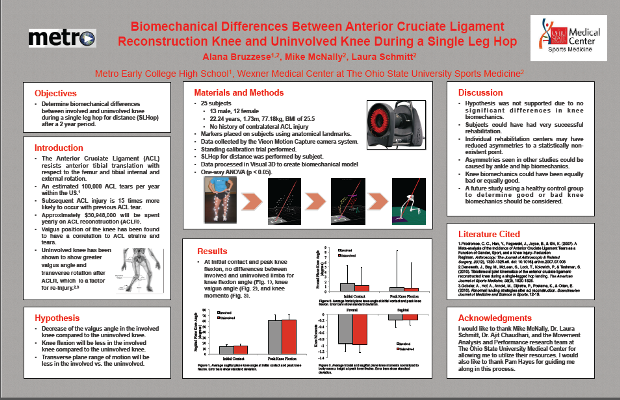
Metro Early College High School students are afforded multiple and on-going opportunities to demonstrate their learning through performance-based assessments, both informally and formally. Gateway presentations, an example of authentic and performance-based assessments, are required for upper level students who are ready to enroll in college courses and graduate from high school. These students must defend their level of preparedness to enroll in college and then, upon completion of the courses, defend their level of success to graduate. Rubrics are used by the adults who attend to assess students during the roundtables and gateway presentations.
Logan High School – Logan, Ohio
STEM Indicator: Students work independently and collaboratively in an inquiry-based learning environment that encourages finding creative solutions to authentic and complex problems.
Introductory Biomedical Science courses allow students to participate in activities and projects introducing them to human physiology, medicine and research processes while also allowing students to design their own studies and experiments to solve problems. More advanced Biomedical Science classes allow students to explore science in action, take on the role of biomedical professionals and investigate real-world medical problems. In classroom observations, students were observed studying the effects of outside stimuli on the body’s blood pressure. Students worked collaboratively using modern data acquisition software to monitor body functions, including respiration and blood pressure, in a variety of settings.
Mount Lebanon Elementary School – Anderson, South Carolina
STEM Indicator: Students use technology resources to conduct research, demonstrate creative and critical thinking, and communicate and work collaboratively.
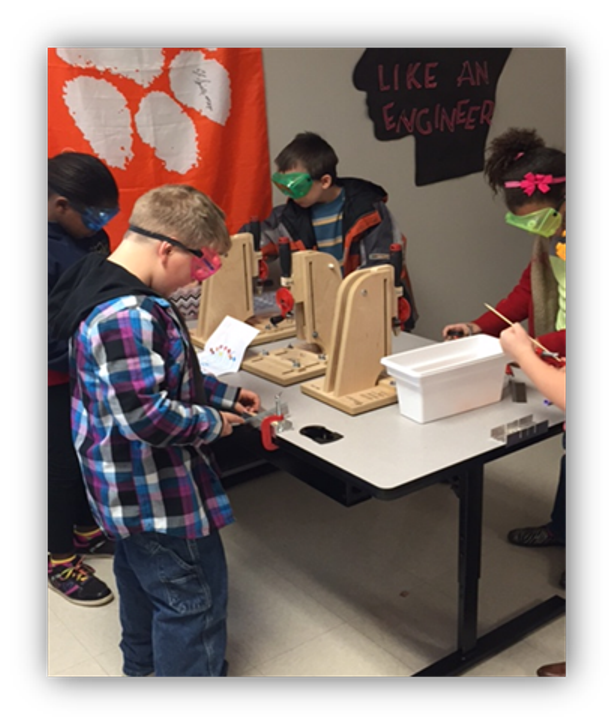
This elementary school parlayed its location near Clemson University and the Tri-County Technical College to provide on-site mentorships and job shadowing to its students in grades 3-5. The Mechanical Engineering Department senior level students work side-by-side with students to design, develop and produce products such as a wind tunnel for the school’s use in the STEM lab. Pat Forrester, an astronaut on loan from NASA to Clemson frequently speaks to students about STEM careers and math/science integration. Community, post-secondary, business/industry partners, and/or families actively support and are engaged with teachers and students in the STEM program.
Immaculata La Salle – Miami, Florida
STEM Indicator: Students work independently and collaboratively in an inquiry-based learning environment that encourages finding creative solutions to authentic and complex problems.
Students have access to and use a range of technological resources to work collaboratively and creatively to research and solve complex problems. For example, students participated in a robotics competition, created and launched rockets, experienced a “behind the scenes” tour at Epcot, designed costumes for a competition, and went scuba-diving in the Florida Keys; all of the activities aligned to their courses and projects and required the use of digital resources to successfully solve the problems, conduct research and use creative thinking skills. STEM classes included projects centered on augmented reality with access to 3D technology for projects that allowed them to examine the human body.
Middleton Magnet High School – Tampa, Florida
STEM Indicator: The STEM school/program supports non-traditional student participation through outreach to groups often underrepresented in the STEM pipeline.
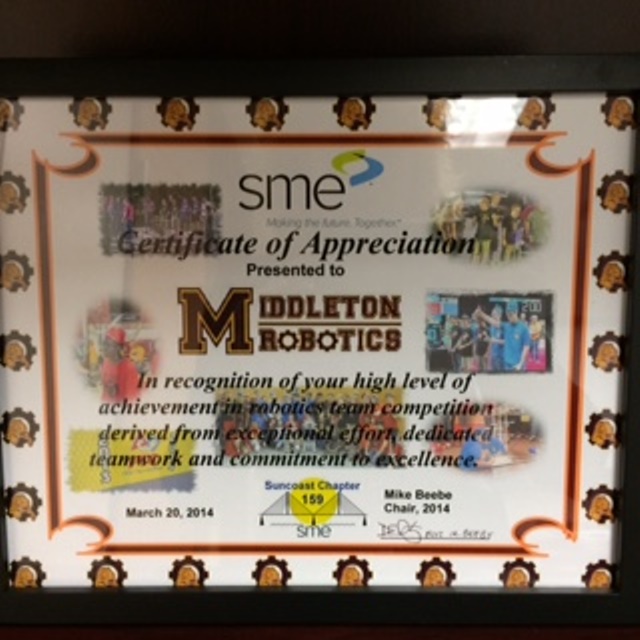
STEM students are given project-based assignments on a “regular and consistent basis” where they have an opportunity to identify a problem, develop a solution, follow a process and then design and market a product. Furthermore, students create and present project-based assignments outside of the traditional classroom that connect their learning to real-world applications. For example, students in the Architecture, Construction and Engineering (ACE) program design a hotel for Tampa’s historic Ybor City. Students work in groups with their ACE mentors who are engineers by profession.
W.J. Keenan High School – Columbia, South Carolina
STEM Indicator: Students are supported in their STEM learning through adult-world connections and extended day opportunities.
The majority of the school is comprised mostly of minority and students from low income families. However, the school ensures that all students who are interested in STEM have an equal opportunity to enroll and succeed in this program. Fifty percent of the slots in Project REAL (Raider Engineering and Academic Leadership) are reserved for female students. To further promote female students’ interest in pursuing STEM, the high school set an equal number of slots for male and females in the Freshman Engineering program. In order to extend their reach beyond their walls, students with the Project Real program provided mentorship to other students, relative to the FIRST Lego League, both within the Richland One District as well as rural areas outside of the district.
Carroll High School – Ozark, Alabama
STEM Indicator: STEM teachers and leaders participate in a continuous program of STEM-specific professional learning.
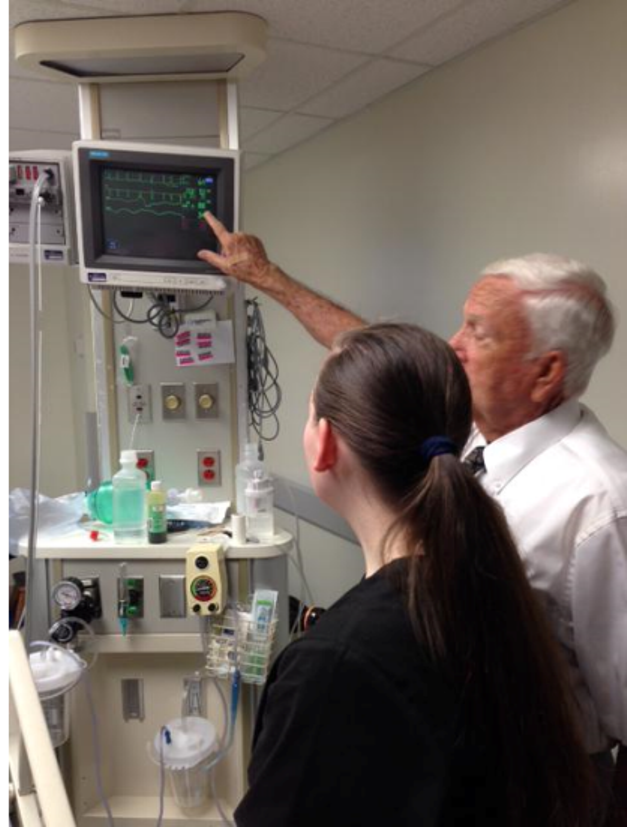
Students enrolled in each Career Academy at Carroll High School have opportunities to participate in real world or authentic learning experiences, typically aligned to their academy’s Standards of Practice. Community partnerships such as, Dale Medical Center and Ozark Fire and Rescue, provide internships and advisory programs for students in the Medical Sciences Academy. The school has the only partnership with Alabama Power and as a result, Alabama Power established an academy that has over eight affiliated businesses to assist with the internships and speaking engagements.
Lower Richland High School – Columbia, South Carolina
STEM Indicator: Students work independently and collaboratively in an inquiry-based learning environment that encourages finding creative solutions to authentic and complex problems.
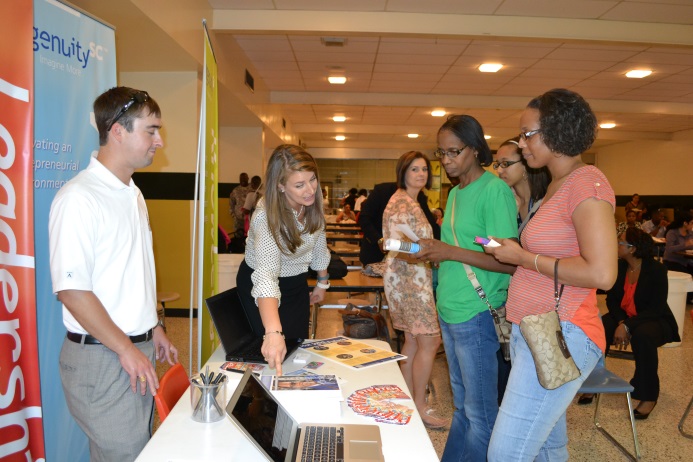
A “train the trainer” model has been implemented to provide Lower Richland High School teachers job-embedded professional development for STEM-related instruction such as scientific inquiry, problem-based learning, project-based learning, engineering, soft skills, the use of technology and the integration of STEM skills across the curriculum. Professional development for staff members is provided through the partnerships with EngenuitySC and the University of South Carolina Professional Development School initiative. The Richland One School District ensures that STEM-specific professional development is offered to educators on “Technology Thursdays.”
Seaside School – Santa Rosa Beach, Florida
STEM Indicator: Students use technology resources to conduct research, demonstrate creative and critical thinking, and communicate and work collaboratively.
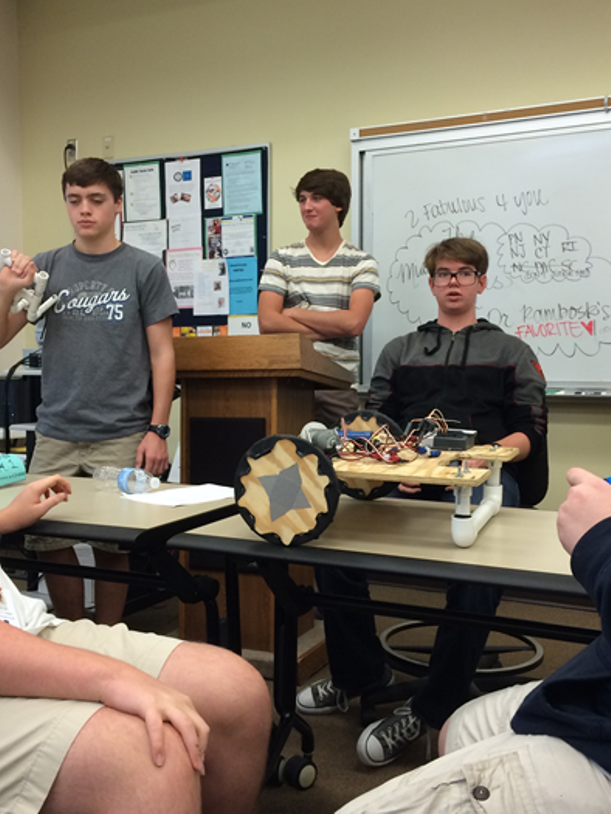
Students at Seaside School have many learning opportunities that require them to problem solve real world issues that are of interest to them. Projects have included building a city, learning and using statistics, and working collaboratively to compete in robotics. Using technology to journal, keep lab notes, and anecdotal notes is a requirement for each phase of the projects. High school students are engaged in dual enrollment, which affords them with opportunities to graduate with an Associate of Arts or Associates of Science degree upon their completion of high school.
Qualitative Data: Words from Leaders of AdvancED STEM Certified Schools
“Going through the STEM Certification helped our school reflect on the ways in which we provide our students with STEM experiences. In doing so, we were able to refine the practices that were effective and make decisions about whether or not to continue those that were not. In addition, it helped us identify ways in which we could enrich our program to provide the most engaging experiences possible for our students.”
Elliott Southard, Principal, Mount Lebanon Elementary School
“Working with AdvancED toward our STEM Certification was the blueprint we needed to frame the STEM practices and ideologies that were already a regular part of our educational environment at Immaculata-La Salle High School. Our interviews and consultations with the AdvancED team prior to our on-site review provided us with well-defined categories from which we could both analyze the impact of separate areas of STEM such as Community Involvement, Cultural and Social Relevancy and Student Engagement as well better understand their integration with each other in our larger goal of a student-centered learning environment. The alignment of our data collection, evaluation and implementation of new and existing STEM initiatives at our school to the self-assessment practices learned during our certification experience with AdvancED is already garnering us attention as a school dedicated to preparing the 21st century student.”
Scott Givonetti, 21st Century Learning Specialist, Immaculata- La Salle High School, Miami, Florida
“I found AdvancED STEM Certification to be an affirmative process. As we looked at each Indicator, we listed all the evidence that supported our actions in that area. Everyone began to see that we integrated STEM strategies, projects, and the 4Cs (critical thinking, collaboration, communication and creativity) in most of our classes – not just our STEM program. I saw teachers who thought that STEM was for the top 15 percent of the student body change their perceptions and realize that a STEM foundation is needed for all students.”
Dana Griggs, Principal, Carroll High School Career Academy, Ozark, Alabama
“Metro Early College High School is extremely pleased to be one of the first to receive AdvancED STEM Certification in the state of Ohio. Successfully completing this process helped to validate the work that we have being doing here for many years. Adopting quality standards are becoming ever more important for STEM schools as we strive to prepare students to become 21st century learners and professionals. The AdvancED STEM Standards provide clear benchmarks reflecting current best practices within the field of STEM education. Being formally certified by AdvancED STEM heightens the level of credibility for our school and provides Metro Early College High School a competitive advantage over other non-accredited STEM schools.”
Anthony Alston, Assistant Principal, Metro Early College High School, Columbus, Ohio
References
International Socialist Review, Vol. 21, No. 1, Winter 1960. Transcription/Editing: 2005 by Daniel Gaido HTML Markup: 2005 by David Walters Public Domain: George Novak Internet Archive 2005).
Vasquez, J. (2014). STEM-Beyond the acronym. ASCD, 72, (4), p. 10-15.
© Cognia Inc.
This article may be republished or reproduced in accordance with The Source Copyright Policy.
The information in this article is given to the reader with the understanding that neither the author nor Cognia is in engaged in rendering any legal or business advice to the user or general public. The views, thoughts, and opinions expressed in this article belong solely to the author(s), and do not necessarily reflect the official policy or position of Cognia, the author’s employer, organization, or other group or individual.
